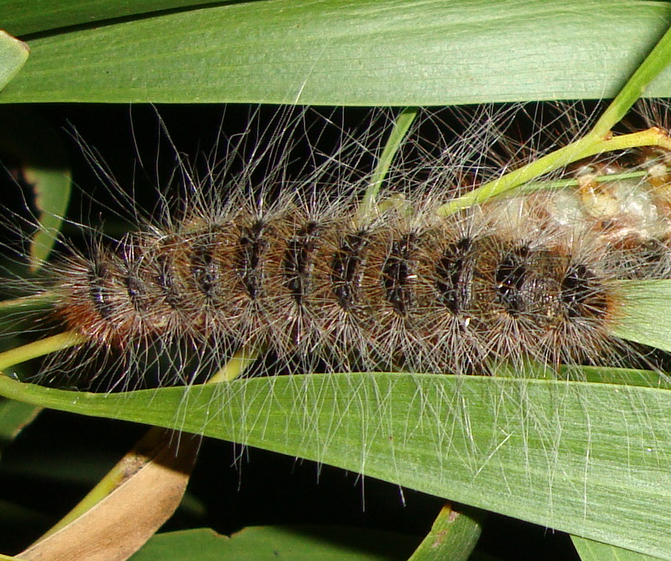Australian horse racing is a multi-billion dollar a year industry and every thoroughbred foal is a potential million-dollar race winner. Many are conceived as the result of stud services valued at hundreds of thousands of dollars. The loss of a foal is an enormous real and potential economic loss for breeders.
In Australia’s eastern states the processionary caterpillar (Ochrogaster lunifer) threatens this industry. It has been linked to equine amnionitis and foetal loss. This causes about one third of horse abortions in affected areas – the single biggest known cause of abortions in the thoroughbred breeding industry.

At night in late autumn the caterpillars cluster together in nests, in or around the trees on which they feed. Ingestion of larvae or cast skins by pregnant mares, results in the harpoon-like hairs (setae) penetrating the gut, migrating through to the uterus and causing the mares to abort their foetuses. We need to understand the environmental distribution of shed setae, and how they break down over time.
An ARC Linkage Project brings together the University of Queensland (UQ) and industry partners AusVet Animal Health Services, Hunter Valley Equine Research Centre and members of the thoroughbred industry to research the risk presented by the setae, and to determine how best to manage it. Dr Bronwen Cribb used scanning electron microscopy in the AMMRF (now Microscopy Australia) at UQ and discovered that each caterpillar sheds 2–2.5 million setae over its lifetime. Also, the dangerous forms of setae occur only on late stage caterpillars and in the chambers where they pupate. Research into how setae disperse and degrade in the environment is continuing.

Scanning electron micrograph of setae.
Development of improved strategies to protect pregnant mares will provide:
September 21, 2015